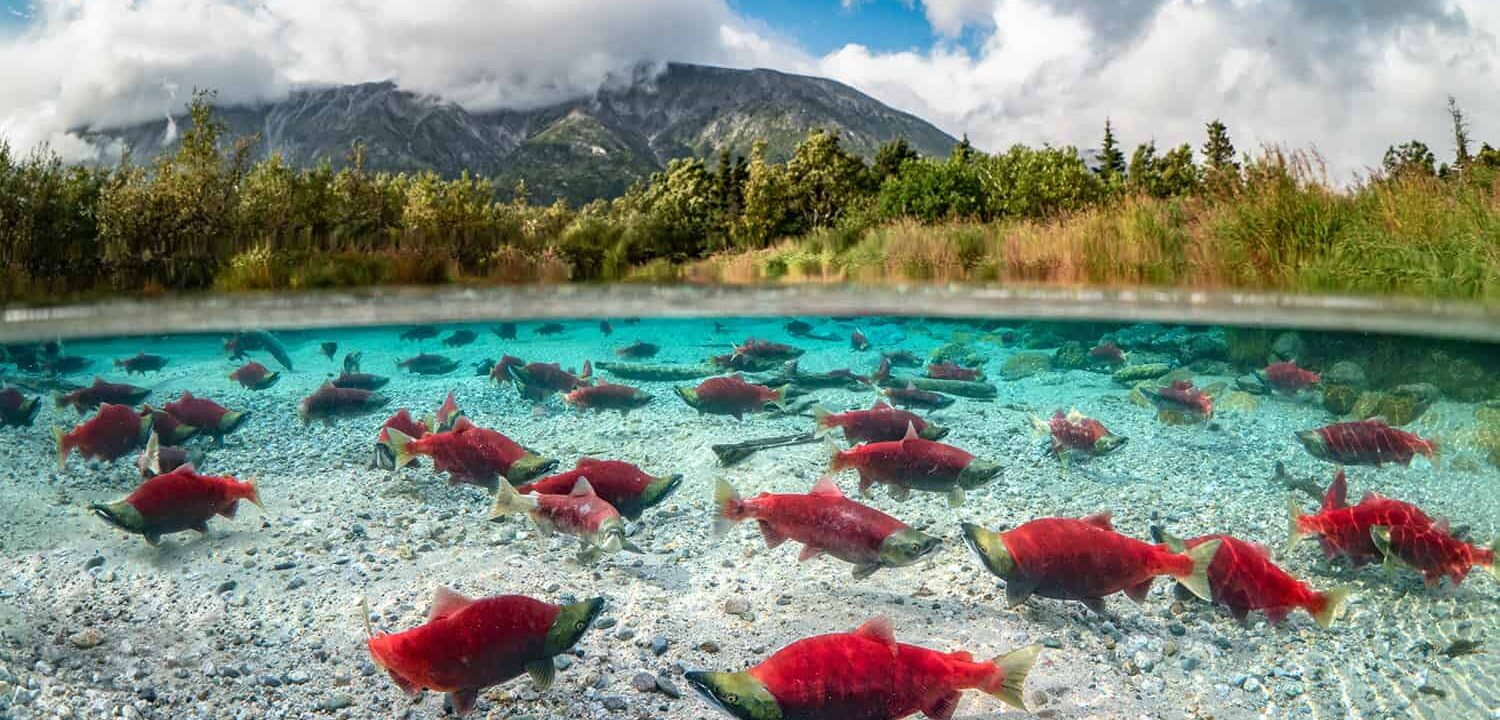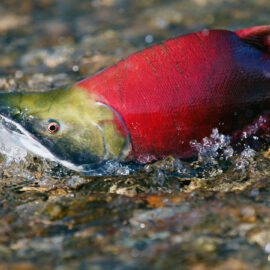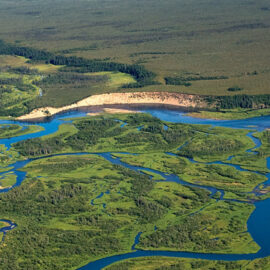The science is clear: Pebble Mine cannot be built without harming Bristol Bay’s salmon fishery. The Environmental Protection Agency must stop the mine.
Today, the U.S. Army Corps of Engineers released its Final Environmental Impact Statement for the Pebble Mine, at the headwaters of the Nushagak and Kvichak rivers in Bristol Bay, Alaska.
The Bristol Bay region constitutes the world’s largest sockeye salmon fishery, returning over 50 million fish and counting this year.
The final environmental review, pushed through on a rushed and politically-motivated timeline, resulted in questionable science and dubious results that were roundly criticized by independent scientists, federal agencies, and Bristol Bay fishermen and community leaders.
“Since day one the Army Corps has cut corners, ignored the science, and silenced Alaskans. They still haven’t answered our questions and addressed our concerns about missing information and data. Their Final EIS is not the thorough, science-based assessment that we were promised,” said Bristol Bay fisherman and Wasilla resident Mark Niver. “At every step of the process, the Pebble Partnership has lied to Alaskans and government agencies about their real mine plan. They have made dozens of changes and even waited until the 11th hour to drastically alter their transportation corridor, which reveals their true intentions of building a much bigger mine. That’s not how you build trust or how you should treat your neighbor.”
During a 2014 scientific assessment of mining in Bristol Bay, the Environmental Protection Agency (EPA) said that a mine footprint destroying more than 1,100 acres of wetlands and 5 miles of salmon streams would pose “unacceptable” impacts to the world class Bristol Bay fishery.
Pebble’s current 20-year mine plan (which both the company and critics agree will give way to a larger mine built over a 75-year timeline) will nonetheless destroy over 2,300 acres of wetlands and more than 105 miles of salmon streams. The 75-year build out will compound the impacts by destroying an estimated 10,000 acres of wetlands and more than 330 miles of salmon streams.
At full build out, Pebble is expected to create more than 10 billion tons of toxic waste at the site, to be managed forever, at the headwaters of two of Bristol Bay’s most important rivers.
“The science is clear: this mine is indefensible,” said Guido Rahr, CEO of Wild Salmon Center. “It cannot be safely built without harming the fishery in Bristol Bay. And a catastrophic tailings dam failure would release toxic waste that would affect the long-term productivity of salmon fisheries. It’s just too big a risk to take. And it’s time for the EPA to step in and stop this mine.”
Under the Clean Water Act, EPA has the authority to veto a permit for a development project that threatens important water resources for drinking water, fish and wildlife habitat, and recreation.
This authority has been used 13 times since the Clean Water Act was passed in 1972, most frequently during the Reagan Administration, which vetoed six projects in the mid- and late-1980s.
Bristol Bay’s sockeye salmon run constitutes half of the world’s harvest every year, fueling 14,000 commercial fishing jobs and a $1.5 billion economy that stretches from fishermen and processors in Alaska to grocery stores and restaurants in New York City.
The region’s world-renowned sport fishing economy, featuring some of the largest king salmon runs on the planet and a large race of lake run rainbow trout, supports thousands of jobs in its own right.
And Bristol Bay is the traditional territory of 31 federally recognized Yup’ik, Dena’ina, and Alutiiq tribes, all of whom rely on fishing, hunting, and gathering of wild foods for cultural and physical sustenance.
In 2010, several Bristol Bay tribes asked the EPA to intervene on Pebble’s plans and issue mining restrictions under the Clean Water Act.
EPA then undertook an exhaustive study of the potential impacts of mining on the waters and fisheries of Bristol Bay. The study went through several drafts, two rounds of independent peer review, and multiple rounds of community hearings and public comment. In total more than a million comments were generated, with the majority signaling support for protecting Bristol Bay. EPA’s work culminated in 2014 with the proposed standards that could have protected Bristol Bay from the threat of the Pebble Mine. These protections were never finalized due to legal action by Pebble’s Canadian parent company. A friendly legal settlement with the Trump Administration and a highly questionable review process at Army Corps allowed the mine to go forward over objections of agency scientists.
Last year, Sen. Lisa Murkowski (R-AK) reinforced the EPA’s authority to intervene in Pebble Mine, should the environmental review show the mine could not be built without damaging Bristol Bay’s salmon resources.
The environmental impact statement shows that the Pebble Mine project will far exceed the impacts that EPA has already deemed unacceptable. And a solid majority of Alaskans support the agency moving to stop Pebble Mine.
“It’s time for EPA to step in under its legal authority and stop this mine,” said Emily Anderson, Wild Salmon Center’s Alaska director. “The science clearly supports EPA action. The communities in Bristol Bay overwhelmingly support it. And a healthy majority of the people of Alaska support it. It’s the right decision for Alaska and for the future of this national treasure.”




